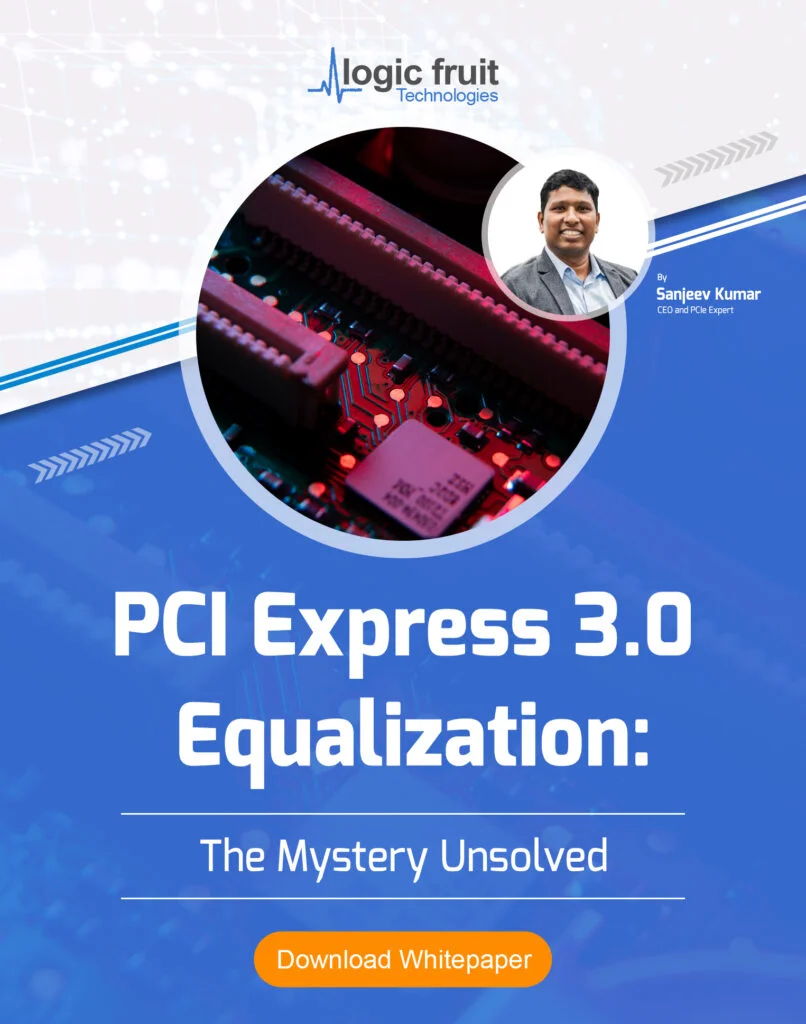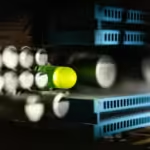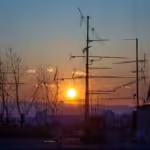Field-Programmable Gate Arrays (FPGAs) are becoming a new creative medium in the ever-evolving world of art and technology. FPGAs are mostly utilized for logical and computational activities, but they also provide artists the opportunity to explore unique and creative possibilities.
We’ll explore in this talk how FPGAs help artists create immersive installations, distinctive soundscapes, and visually arresting artwork by bridging the gap between technology and the arts. We will examine the methods, resources, and difficulties related to FPGA-driven art, proving that FPGAs are more than just logical devices—rather, they are creative sparks that never stop. Greetings from the realm of FPGA-Driven Art, where the creative possibilities are endless.
Artistic Expression Through FPGAs
Field-Programmable Gate Arrays (FPGAs) offer an intriguing combination of creativity and technology for artistic expression. Although FPGAs are typically thought of in relation to logical operations and hardware design, artists have found a wide range of inventive methods to apply this technology to their creative work. The various ways that FPGAs can be used for artistic expression are examined in this section.
A. Visual Art
Generative Art: FPGAs enable artists to produce generative art, in which chance and algorithms are essential components. Artists can create dynamic visual patterns, animations, and visuals with programming. FPGAs are able to continuously alter and transform these images, creating one-of-a-kind works of art that are always evolving. This method questions conventional ideas about static artwork.
Digital Painting and Animation: Real-time processing capabilities provided by FPGAs enable artists to produce digital paintings and animations with remarkable speed and accuracy. Artists may create dynamic visual experiences by interactively refining their work thanks to the quick feedback and responsiveness of FPGAs.
Real-time Image Processing: Real-time image processing is an area in which FPGAs shine, giving artists the ability to quickly alter photos and films. With the help of this feature, visual content can be transformed, filtered, and applied in many ways to create novel and experimental visual aesthetics.
B. Music and Sound
Synthesizers and Soundscapes: Soundscapes and bespoke synthesizers can be made with FPGAs. Artists have extraordinary power over sound design because they can create custom sound generators and processors. This makes it possible to produce audio experiences that have never been heard before.
Algorithmic Composition: Music can be produced algorithmically by FPGAs. These gadgets can be programmed by musicians to create music that changes, adapts, and reacts to different inputs and surroundings. As a result, real-time composition and playing of music are achieved.
C. Interactive Installations
Sensor-Driven Art: A key component of sensor-driven art installations is FPGAs. To create interactive experiences, artists can incorporate a variety of sensors, such as temperature, light, and motion detectors. FPGAs interpret the sensor data and provide either visual or audio feedback as viewers engage with the installation, turning it into a dynamic and immersive work of art.
Immersive Experiences: FPGAs play a key role in producing immersive artistic environments. They can operate intricate multimedia projects that use soundtracks, interactive features, and visual projections to completely engulf the audience in the realm of artistic expression. Deep interaction is made possible by this technology, which dissolves the boundaries between the viewer and the artwork.
By experimenting with these FPGA-driven methods, artists frequently find themselves stretching the limits of conventional artistic mediums. FPGAs’ real-time capabilities and agility create new possibilities for artistic expression that go against preconceived ideas about static art and conventional artistic methods. Artists can use FPGAs to create works that change, react, and adapt, offering listeners and spectators one-of-a-kind, dynamic, and interactive experiences. This artistic and technological fusion highlights the countless opportunities FPGAs present to imaginative minds.
FPGA-Driven Art Techniques
In the world of art, creativity knows no bounds, and artists are constantly seeking new mediums and techniques to express their vision. FPGAs, with their ability to be programmed and reprogrammed for a wide range of applications, offer a unique platform for artistic expression beyond traditional logic applications. In this section, we will delve into various FPGA-driven art techniques that allow artists to push the boundaries of their creative endeavors:
A. Visual Art:
Generative Art:
The genre of generative art is one that feeds off of randomness and algorithmic inventiveness. FPGAs are capable of being programmed to produce original visual content in real-time, frequently producing captivating and dynamic digital artworks.
Artists utilize FPGAs to create visually striking and dynamic works by combining complicated algorithms, procedural generation, and randomization.
Digital Painting and Animation:
The canvas used for digital painting and animation can be altered using FPGAs. Artists are incredibly accurate and fast at creating textures, animations, and brushstroke effects.
FPGA-based tools enable artists to work with pixels, colors, and forms in real-time, making it simpler to produce dynamic, ever-changing digital art.
Real-time Image Processing:
Real-time image processing and manipulation are made possible by FPGAs, giving artists unprecedented opportunities for interactive installations and live performances.
Artists can create bizarre and immersive experiences by combining, distorting, or morphing imagery from several sources using FPGA-driven image processing.
B. Music and Sound:
Synthesizers and Soundscapes:
Custom synthesizers and intricate soundscapes can be created with FPGAs. Artists are able to create original musical instruments with fresh tones and textures.
Traditional waveforms are not a restriction for FPGA-driven synthesizers, allowing musicians to experiment with new sounds.
Algorithmic Composition:
FPGAs can be used by musicians and composers to produce algorithmic music, which changes dynamically in response to outside inputs or preset rules.
The use of FPGAs for algorithmic composition results in compositions that are never exactly the same, providing an element of novelty and unpredictability to musical performances.
C. Interactive Installations:
Sensor-Driven Art:
In order to construct interactive installations that react to the presence and actions of viewers, FPGAs can connect with a wide range of sensors, including accelerometers, cameras, and environmental sensors.
Real-time content generation, adaptation, and transformation are all possible with these sensor-driven artworks, resulting in immersive and interactive experiences.
Immersive Experiences:
When it comes to developing immersive environments, such as virtual reality (VR) and augmented reality (AR) installations, FPGAs are essential.
Artists have the ability to create FPGA-driven systems that combine the actual and virtual worlds, allowing spectators to experience reality in new ways.
These methods show off the enormous creative potential that FPGAs offer the arts community. Through the embracement of FPGAs’ programmable nature, artists can transcend conventional limitations and explore new frontiers where technology and artistic expression meet in engaging and inventive ways.
Tools and Platforms for FPGA-Driven Art
To unleash the creative potential of FPGA-driven art, artists and developers have at their disposal a range of tools and platforms designed to facilitate the design, implementation, and realization of their artistic visions. These tools encompass both hardware and software components, each tailored to various aspects of FPGA-driven creative expression.
A. FPGA Development Boards:
FPGA development boards serve as the foundation for any FPGA-driven art project. They come equipped with an FPGA chip, various input/output interfaces, and supporting components that make it possible to develop and prototype creative applications.
Some popular FPGA development boards include:
Xilinx Artix-7 Series: Known for their flexibility and power, these boards are often used in projects demanding high computational capacity and custom logic.
Altera/Intel Cyclone Series: Cyclone FPGAs provide a cost-effective option for artists looking to experiment with FPGA-driven art.
Lattice Semiconductor iCE40 Series: Ideal for smaller, energy-efficient projects, these FPGAs are perfect for portable installations.
B. Programming Languages and Frameworks:
Just as a painter uses brushes and colors to create art, FPGA artists use programming languages and frameworks to manipulate the FPGA’s logic elements and build their artistic visions. Some key tools and languages include:
VHDL (VHSIC Hardware Description Language): A hardware description language that allows artists to describe the behavior of their design and its interconnections.
Verilog: Another widely used hardware description language that provides a flexible and expressive means of describing digital systems.
High-Level Synthesis (HLS): HLS tools like Xilinx Vivado HLS or Intel HLS Compiler enable artists to describe their designs at a higher level of abstraction using C, C++, or SystemC and then convert them to FPGA-friendly logic.
FPGA-specific Libraries: Various vendors provide libraries and IP (Intellectual Property) cores tailored for specific applications, simplifying the design process.
C. Open-Source vs. Proprietary Solutions:
Artists have the choice of utilizing open-source or proprietary tools and platforms for FPGA-driven art. Each option has its own set of advantages and limitations.
Open-Source Tools: Projects like IceStorm, Project IceStorm, and others offer open-source toolchains and libraries for FPGA development. These tools provide cost-effective options and encourage community collaboration.
Proprietary Tools: Companies like Xilinx and Intel (formerly Altera) offer proprietary FPGA development environments. These tools are known for their comprehensive features, professional support, and optimized performance.
D. Community and Resources for FPGA Artists:
The world of FPGA-driven art is a vibrant and collaborative one. Artists can find support, guidance, and inspiration from various online communities, forums, and educational resources. Some valuable resources include:
FPGA Art Forums: Online forums and communities such as the FPGA4Fun forum and the Reddit FPGA community provide platforms for artists to share their work, seek advice, and collaborate.
Online Tutorials and Courses: Numerous online tutorials and courses, often available for free, can help artists learn the fundamentals of FPGA development.
Conferences and Workshops: Attending conferences like the International Conference on Field-Programmable Technology (ICFPT) can help artists stay updated on the latest advancements and connect with fellow enthusiasts.
Challenges and Limitations
While FPGA-driven art offers a wide range of creative possibilities, it is essential to be aware of the challenges and limitations that artists and enthusiasts may encounter when delving into this medium. Understanding these obstacles can help individuals navigate the field more effectively and make informed decisions about their artistic pursuits. Some of the key challenges and limitations in FPGA-driven art include:
Technical Constraints:
FPGA programming requires a strong understanding of hardware description languages like VHDL or Verilog. This can be a barrier for artists without a background in electrical engineering or computer science.
Limited resources on an FPGA, such as logic cells, memory, and processing power, can constrain the complexity and scale of art projects.
FPGA-based projects often require a substantial amount of testing and debugging, which can be time-consuming and frustrating for artists.
Accessibility and Cost:
High-quality FPGA development boards and related tools can be expensive, making them less accessible to emerging artists or those on a tight budget.
Licensing costs for proprietary FPGA development software can also add to the financial burden.
Availability of hardware and software varies by region, which may limit access to necessary tools and resources.
Learning Curve:
Mastering FPGA programming and design can be a steep learning curve, especially for those new to the field. Artists may need to invest significant time in acquiring the necessary skills.
The rapidly evolving FPGA technology landscape requires artists to stay up-to-date with the latest tools and methodologies.
The complex nature of FPGAs can be overwhelming for some, leading to a discouraging experience for newcomers.
Ethical Considerations:
Artists working with FPGA technology should consider the ethical implications of their projects, particularly those related to privacy, surveillance, and data security.
Concerns about electronic waste and environmental impact arise when creating physical artworks that use FPGAs, as disposal and recycling may be challenging.
Interoperability and Collaboration:
Integrating FPGA-driven art with other technologies or collaborating with artists from different disciplines can be challenging due to differences in technical knowledge and tools.
Ensuring compatibility with existing exhibition spaces or other artists’ contributions may require additional effort and technical expertise.
Legal and Intellectual Property Issues:
Artists need to be aware of intellectual property rights and legal implications when using FPGA technologies. Issues such as patent infringement, licensing, and open-source compliance must be considered.
Hardware Limitations:
FPGA hardware itself has constraints, such as limited power efficiency and a lack of direct support for certain operations, which can affect the types of projects that can be realized.
Maintenance and Longevity:
As FPGA technologies evolve, maintaining and updating older projects can be challenging. Artists may need to consider the long-term sustainability of their work.
The Future of FPGA-Driven Art
The future of FPGA-driven art is a fascinating and rapidly evolving landscape that promises to push the boundaries of creative expression. As technology continues to advance, we can expect several exciting developments in this field:
Integration with Emerging Technologies:
FPGA-driven art will increasingly intersect with emerging technologies such as augmented reality (AR), virtual reality (VR), and mixed reality (MR). Artists will have the opportunity to create immersive experiences that combine the physical and digital worlds. These technologies, when combined with FPGAs, can enable new dimensions of interactive and sensory art.
Artificial Intelligence and Machine Learning:
Machine learning and AI algorithms have already started influencing various art forms. FPGAs, with their parallel processing capabilities, are well-suited for running complex AI models. Artists may leverage FPGAs to create AI-powered art generators, allowing for more intricate and context-aware artistic creations.
Enhanced Realism in Graphics and Rendering:
FPGAs can significantly improve real-time graphics rendering in video games and simulations. As FPGA technology becomes more accessible, artists and game developers will be able to achieve greater realism in visual art, enabling lifelike simulations and immersive storytelling.
Blockchain and Digital Ownership:
The use of blockchain technology to establish ownership and provenance of digital art is gaining traction. FPGAs can be employed to create hardware-based, unforgeable certificates of authenticity and ownership for digital artworks, reducing the risk of art forgery in the digital realm.
Environmental Art and Sustainability:
As environmental concerns continue to rise, FPGA-driven art can be harnessed to raise awareness and promote sustainability. Artists may use FPGAs to create interactive installations and artworks that respond to environmental data, inspiring conversations about climate change and ecological preservation.
Cross-Disciplinary Collaborations:
The merging of art and technology is fostering collaboration between artists, engineers, and scientists. The future of FPGA-driven art may involve interdisciplinary projects that address complex societal challenges or explore the frontiers of scientific knowledge.
Accessible Tools and Learning Resources:
As FPGA technology becomes more democratized, there will be a greater emphasis on providing accessible tools and resources for aspiring FPGA-driven artists. This will reduce the learning curve and make FPGA art creation more inclusive.
Ethical and Privacy Considerations:
Artists will need to navigate the ethical and privacy implications of using technology, including FPGAs, in their work. Issues related to data privacy, surveillance, and the responsible use of technology in art will become increasingly important in the discussion surrounding FPGA-driven art.
Artificial Life and Evolutionary Art:
FPGAs can be used to simulate artificial life forms and evolutionary processes. This area of FPGA-driven art may lead to the creation of digital ecosystems that evolve over time, offering new and unique artistic experiences.
Conclusion
FPGA-driven art is a dynamic fusion of technology and creativity that offers boundless possibilities beyond traditional logic applications. From generative art to immersive installations, it blurs the lines between art and technology. This medium, while not without its challenges, benefits from a thriving community and open-source resources that make it accessible to a broader audience.
As artists explore FPGA-driven art, they must remain mindful of ethical considerations, ensuring their creations respect societal norms. The case studies presented here have highlighted its vast potential, but this is just the beginning. The future holds exciting trends and technologies that will continue to redefine the boundaries of artistic expression.
In conclusion, FPGA-driven art is a testament to human innovation and our capacity to transform technology into a canvas for self-expression. It challenges our perceptions of art and technology, encouraging artists and technologists to embrace this medium and contribute to its ongoing evolution. The possibilities are limited only by imagination, offering a new frontier in the art world.



![What is FPGA Introduction to FPGA Basics [2023] computer-chip-dark-background-with-word-intel-it](https://fpgainsights.com/wp-content/uploads/2023/06/computer-chip-dark-background-with-word-intel-it-300x171.jpg)








